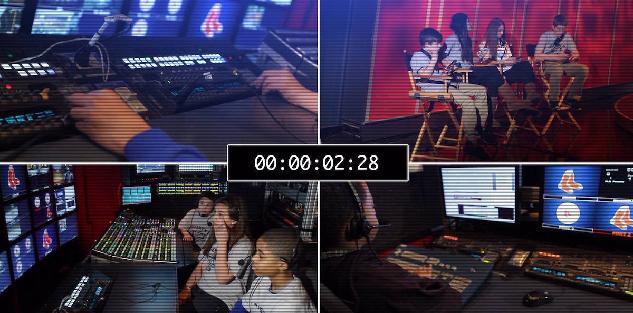Featured courses
- Understanding The Shift by Brandon Ogle
- Two Drills to Improve Outfield Movement and Communication by Grant Young
- The Ultimate Resource For Coaching Youth Baseball by Jackson Chlebowy
- Become a Master at Bunting by Brandon Ogle
- 5 Reasons Why There Is More To Good Base Running Than Just Speed by Brandon Ogle
- Three Injury-Prevention Tips For Your Offseason Pitching Program by Grant Young
- How to Teach Hitting to the Next Generation by Grant Young
- Developing Defensive-Minded Baseball Catchers by Grant Young
- 3 Baserunning Tips to Score More Runs in Baseball by Grant Young
- 5 Outfield Drills to Work on in Season by Alec Burris
- Keys For Scoring More With Runners on First and Third Base by Grant Young
- How to Develop Your Game to Become a Five-Tool Player by Brandon Ogle
- 3 Coaches Share the Keys to Running Baseball Practice the Right Way by Grant Young
- Four Drills to Sharpen a Baseball Hitter’s Vision at the Plate by Grant Young
- Four Quotes to Hit Better With Two-Strikes by Grant Young
- Four of Former MLB Pitcher Juan Nieves’ Movement-Based Pitching Drills by Grant Young
- Two Tips For Developing an Elite Baseball Bullpen by Grant Young
- Overcoming the Four Challenges of Indoor Baseball Practices Because of Weather by Grant Young
- Three Tips to Make Your Baseball Team Mentally Tougher by Grant Young
- Three Priceless Philosophies to Motivate Your Baseball Team by Grant Young
- Three Offseason Baseball Drills to Simulate Competition by Grant Young
- Three Baseball Offseason Strength and Conditioning Essentials by Grant Young
- Important Ways to Improve Your Baseball Team’s Baserunning by Grant Young
- Three Ways to Perfect Hitting Mechanics From an MLB Icon by Grant Young
- Catchers can influence pitchers...for bad or good by Drew Johnson
- Throwing Strikes and Playing Good Defense Equals Wins by Jose Ortiz
- Legendary Indiana Head Baseball Coach Bob Morgan’s Offensive Theory by Grant Young
- Tennessee Head Baseball Coach Tony Vitello on How to Practice Baserunning by Grant Young
- Three Great T-Ball Drills For Youth Baseball Players by Grant Young
- How to Manage a Baseball Pitching Staff by Grant Young
- Three Uncommon Tips to Become a Better Hitter by Grant Young
- How a Baseball Coach Can Develop Strike Throwers by Grant Young
- Drills to Develop Elite Baseball Outfielders by Grant Young
- Baseball Training Exercises to Strengthen Arm and Bat Speed by Grant Young
- How to Use Bunting to Score More Runs by Grant Young
- How To Build An Elite Baseball Infielder by Grant Young
- Three Drills to Improve Your Baseball Team's Infield Play by Grant Young
- Three Keys to Curating a Pitching Staff’s Success by Grant Young
- 3 Techniques to Develop a Baseball Player’s Hitting Approach by Grant Young
- How to Cultivate Confidence Within Your Pitchers by Grant Young
- 5 Every Day Drills To Help You Become A Better Catcher by tyler Linderman
- How to Throw A Curveball by Brandon Ogle
- How to Assemble a Lock-Down Bullpen by Brandon Ogle
- How to Throw a Sinker by Brandon Ogle
- How to be a Smart Baserunner by Brandon Ogle
- Improving a player's slugging average by Phillip Woolgar
- The 8 Fundamentals of Pitching by Drew Johnson
- How to Throw a Deceiving Changeup by Brandon Ogle
- Step Up Your Outfield Defense With These Three Drills by Jose Ortiz
- 8 Baseball Drills Every Player Should Practice by Drew Johnson
- How To Become An Elite Defensive Outfielder by Tyler Linderman
- 5 Tips For Crushing A Curveball by Johnny Grassi
- LEGENDS FOR YOUTH INCLUSION BASEBALL CLINIC by Phil
- Fourteen Ways To Turn A .300 Hitter Into A .210 Hitter by Jay P. Granat, Ph.D.
- How To Become The Ideal Leadoff Man by Brandon Ogle

Become a Master at Bunting
- By Brandon Ogle
Former college baseball coach Billy Godwin showed the importance of bunting when he said, “I think it’s about creating pressure. When you can get a bunt down in a good situation in the right location against a team defensively, now you’ve created where the team’s got to make that throw.” Bunting isn’t always going to be a success, but it is creating a situation where the defense has to make a play. However, players need to know the fundamentals that will make this process more effective.
Step-by-Step Technique Guide
( Free video lesson from 'The Complete Guide to Hitting for Beginners' by Coach Billy Hall)
In a game that can often be decided by one run, being able to bunt can be a lifesaver. In this section, I’ll provide you with a beginner’s guide on how to bunt properly. While developing your ability to bunt consistently depends on practice, just mastering the technique can take you a long way.
Once you step up to the plate, you don’t want to give away your intentions too early, so make it look like a normal at-bat. Then, as the pitchers enters his windup, prepare to bunt. The hand placement will involve the left-hand being moved up slightly and the right-hand up towards the middle of the bat. Make sure to keep you’re right-hand on the backside of the bat to avoid a ball clipping your fingers. This placement is for right-handed hitters, but with lefties it would be the direct opposite.
Finally, as the pitch comes in, let the ball hit the bat and angle it to the direction you intend. The key is to not try to swing at the ball in bunting form. This will not get the job done!
Bunting for a Hit
If your bunting ability is good enough and you have the speed to get down the line quickly, then you’ll always have the possibility of bunting for a hit available to you. It can be a deadly weapon as it will affect how pitchers throw to you and where the infielders position themselves on the infield. If you intend to bunt for a base hit, then you can either pursue a drag bunt or a push bunt.
A drag bunt is one that is hit down the third base line. If a righty is on the mound, then usually he’ll fall off more towards the 1st base line. This leaves the third baseman as the main guy you’ll need to worry about. If you see him or her playing in a standard or deep position, then it’s a good set-up for a drag. Meanwhile, a push bunt is hit towards the second or first baseman. This is the recommended strategy for when a lefty is pitching due to the fact that they’ll fall off towards the 3rd base line.
If you see the first baseman anticipating a bunt, then try to bunt it hard enough to beat the pitcher, but not hard enough to reach the second baseman. With the first baseman off his line, there will be no one to cover the bag. These are just a few scenarios in which players could turn a bunt into a hit.
Sacrifice Bunt
A sacrifice bunt is relatively simple, but nonetheless requires technique. This is where a player bunts to essentially give up their out and advance the runner who is already on base. However, this doesn’t mean you can just bunt wherever. Failure to accurately execute the bunt can lead to the defense getting the lead runner out, rather than yourself at first base.
In terms of effectively laying down a sacrifice, you need the ability to utilize the bat to aim the ball where you want it to go. If that means the third base line, then hit a short bunt that stays fair, but not hard enough to reach the third baseman in time to throw to second. Essentially, at the heart of a sacrifice bunt is technique.
When Does Bunting Make Sense?
When should you bunt? Some critics argue that bunting never makes sense. After all, some of the time it just gives away an out for free. While I used to think this was true, after watching the Kansas City Royals make a run to the 2014 World Series, I realized salvaging one run can be the difference in any given game. One time I think bunting makes perfect sense is when you’re facing a dominant pitcher. Say this pitcher has already shut your team out for four innings and shows no signs of slowing down. With the infielders back, this could be the perfect time to lay one down for a hit. It could not only result in a base runner, but also help disrupt the pitcher’s rhythm. They’ll be forced to throw out of the stretch then as opposed to a traditional wind up.
Similarly, imagine your team being down one run in the bottom of the ninth. The first guy gets on. With you at-bat, wouldn’t it make sense to move that runner into scoring position with a sacrifice bunt? This could bring the winning run to the plate with a runner on 2nd.
Finally, a bunt might make sense if you’re just having a bad day at the dish. If you’re struggling to make contact, this might be the perfect time to bunt one and just give full-out hustle to get a base knock. These are just a few of many situations where it might make sense, but show bunting isn’t always a waste.
Players Who Should Never Bunt?
While I have shown that bunting can help a team win games, that doesn’t mean every player should go out there bunting. Even though some may assume that fast players should regularly bunt and slow players should never bunt, this perception is not always accurate.
First off, it depends on the defense. If the defense is positioned in a cautious set-up, a bunt may be a possibility for any player if executed properly. With this said, my main reason why you shouldn’t agree with that perception is because I believe that elite hitters should never bunt. Some may attribute this to ego, but if you have a guy like Mike Trout at the plate, I’m not afraid to admit that I’d rather have him swing the bat than move a run into scoring position.
It is a simple risk vs. reward measurement. Some may argue everyone should be a potential option for bunting, but I don’t believe that is always the case.
Utilize Batting Practice
The only way to get good at something is through practice. Once you’ve got the technique down (which, honestly, isn’t that complex), you’ve got to work on being able to bunt to different areas. Whether it be a drag, push, or sacrifice, all of these take time practicing. So, when you’re in the batting cage taking some swings before the game, use about five of those pitches to practice bunting. It’s better to miss on a couple during practice than foul one straight up during a game.
Don’t Hesitate
Most baseball people I’ve talked with have said the important thing about bunting revolves on this idea of not hesitating. While deception dominates the early stages of the at-bat, once you square around and the pitch is in the zone, you must execute the bunt. You don’t want to get nervous once the pitch is thrown and lunge at the ball, thus resulting in a failed bunt. Utilize the technique given and accomplish the task at hand!



